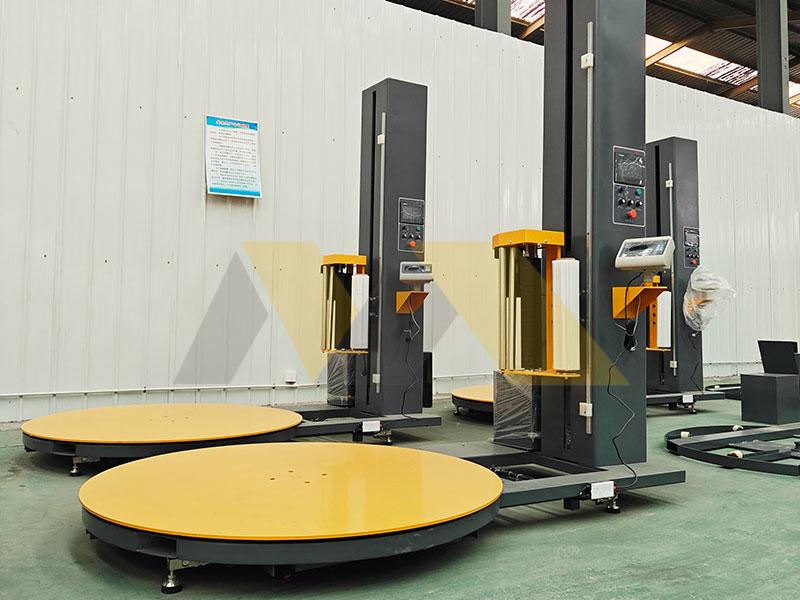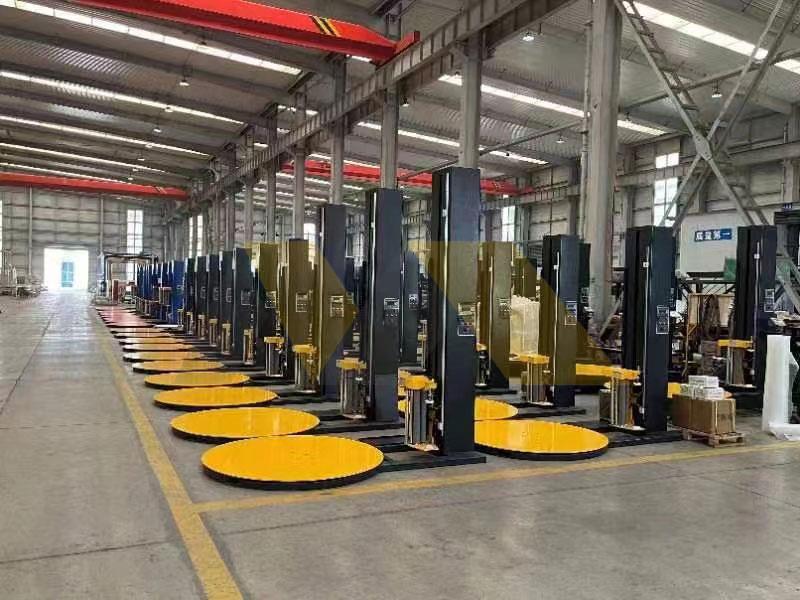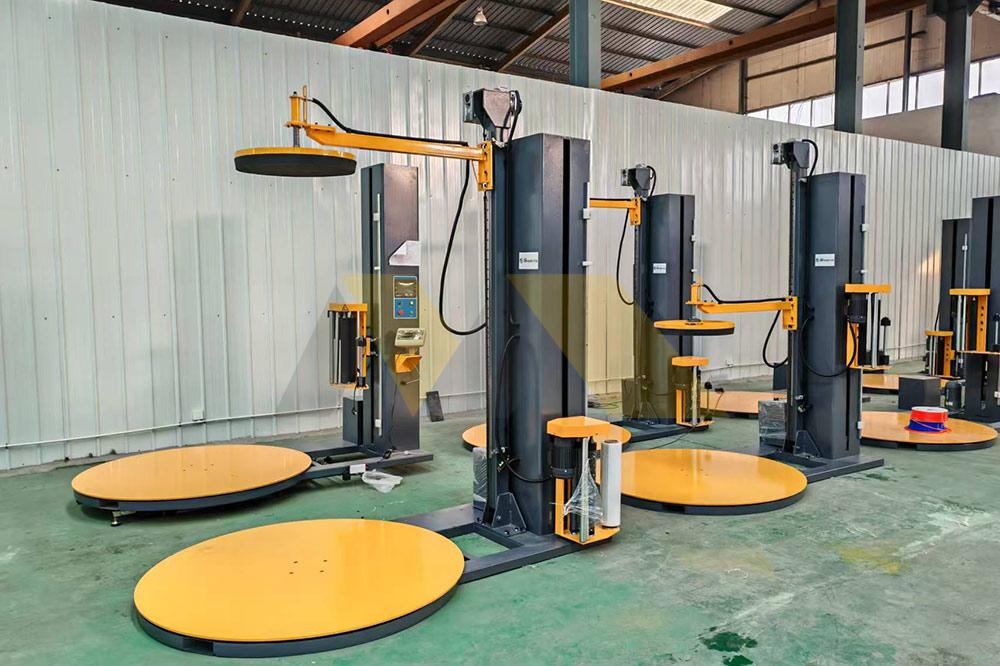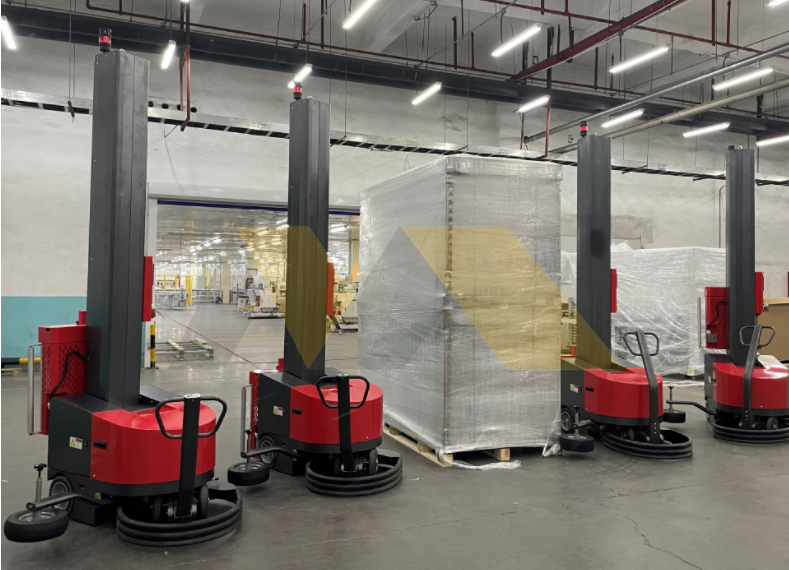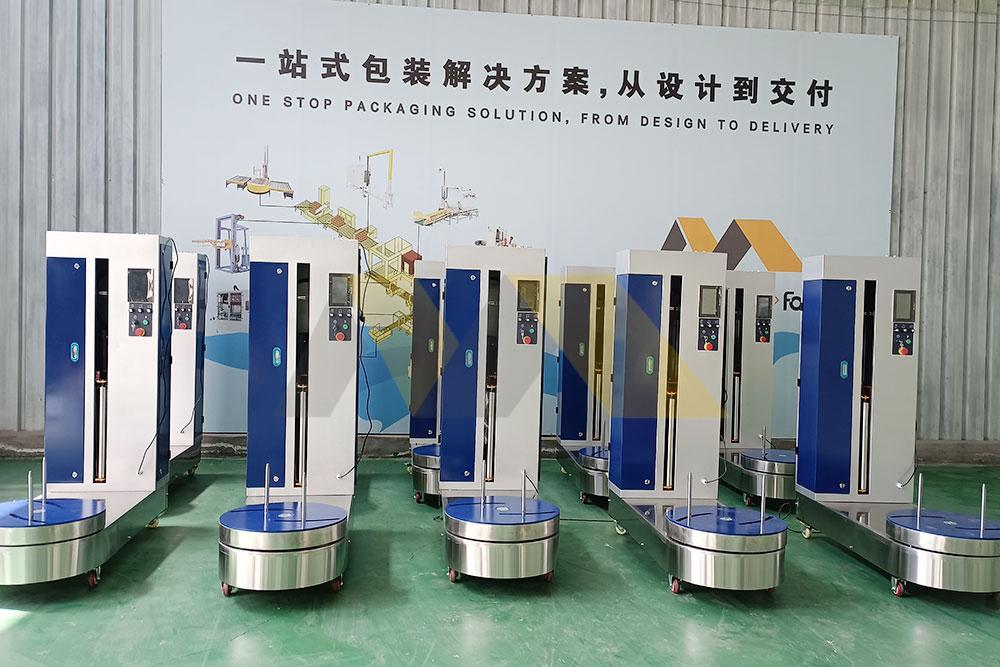
Sourcing machinery overseas feels risky, doesn’t it? Poor quality, missed deadlines, communication nightmares – it can cripple your business. Finding a supplier you can truly depend on is crucial.
A trustworthy luggage wrapping machine supplier for export consistently delivers high-quality, certified machines that meet specifications. Key indicators include transparent communication, proven experience with international logistics, reliable after-sales support, verifiable certifications (like CE, ISO), and positive testimonials or case studies from other international buyers. They understand the specific needs of export markets, including packaging, documentation, and handling payment methods securely. Ultimately, trust is built on reliability and consistent performance over time.
Understanding these trust factors is just the beginning. Let’s dive into the specifics of these machines and the services they provide.
What machine does the airport use to wrap luggage?
Confused about those machines spinning luggage at the airport? They might seem complex, but understanding the core technology is simple. Let’s break down what they are.
Airports typically use specialized stretch wrapping machines designed for luggage. These machines rotate the baggage (either on a turntable or using a rotating arm) while dispensing layers of durable stretch film tightly around it. The goal is to fully encapsulate the luggage quickly and securely. They often feature user-friendly controls for operators and safety mechanisms suitable for a busy public environment. These are essentially optimized versions of industrial pallet wrappers.
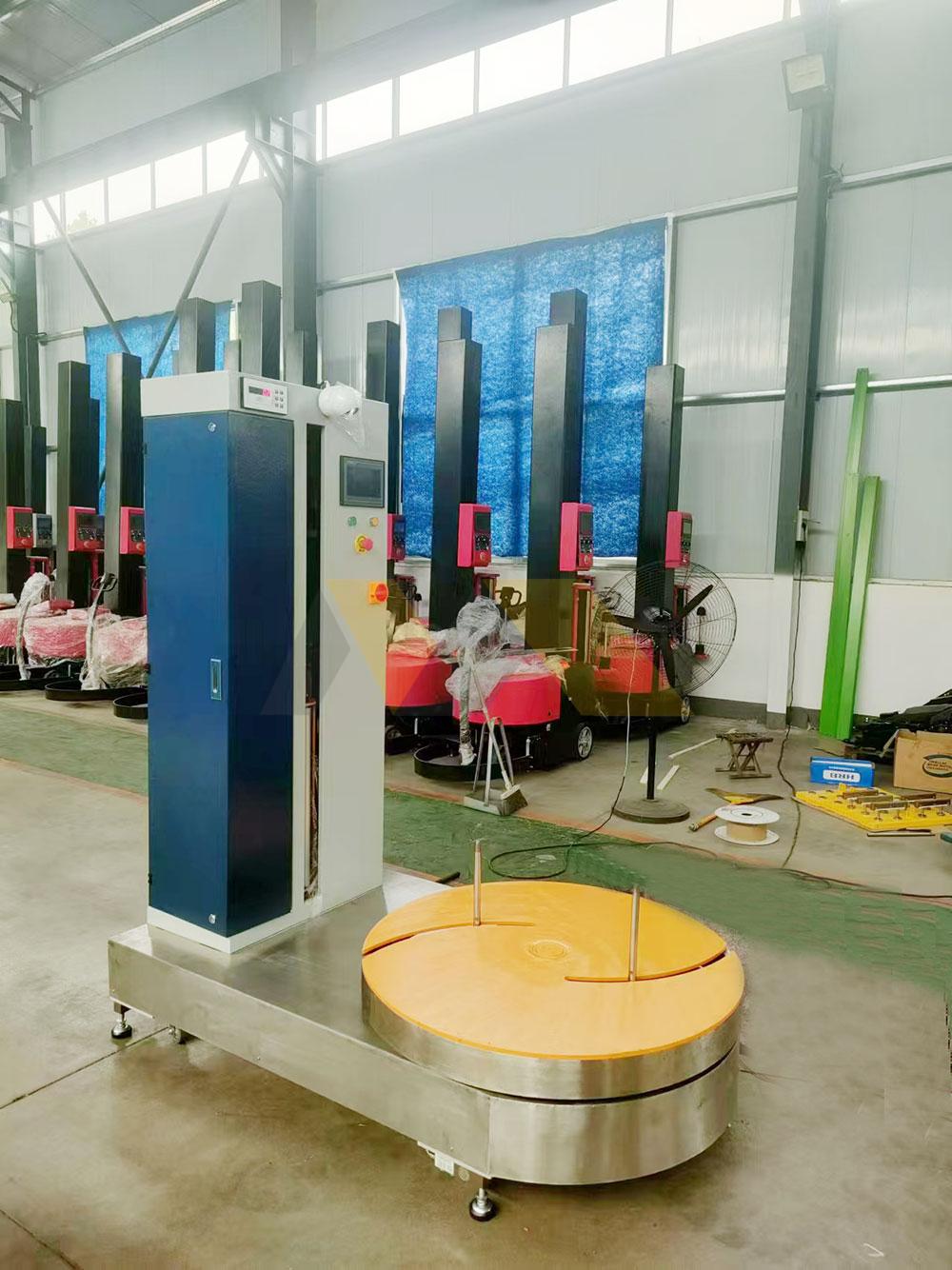
If you’re considering purchasing this type of equipment, understanding the details is important. Feel free to reach out if you have questions about specifications or finding the right model for high-traffic use.
Dive Deeper: Understanding Airport Luggage Wrappers
When you see luggage being wrapped at an airport, you’re looking at a specific application of stretch wrapping technology. As someone who manufactures these types of machines, I’ve seen how they’re adapted for this unique environment. Let’s explore the nuts and bolts.
Core Technology: Stretch Film Application
The fundamental principle is simple: apply stretch film under tension around an object. In this case, the object is luggage of various shapes and sizes.
- Stretch Film: The material used is almost always Linear Low-Density Polyethylene (LLDPE) stretch film. It has key properties perfect for this job:
- Stretchability: It can be stretched significantly (often 150-300%) before breaking. This tension is what holds the wrap tightly.
- Cling: The film naturally clings to itself, meaning no adhesives or heat sealing are needed. Once wrapped, it stays put.
- Puncture/Tear Resistance: Good quality film resists minor punctures and tears, crucial for surviving baggage handling systems. I always emphasize using high-quality film to my clients; skimping here defeats the purpose.
- Clarity: Usually, clear film is used so baggage tags remain visible, although sometimes colored films are used for branding or quick identification.
- Application Mechanism: There are two main ways the film is applied:
- Turntable Model: The luggage is placed on a platform that rotates. A stationary mast holds the film roll carriage, which moves up and down to cover the entire height of the luggage as it spins. This is very common for standard suitcase sizes.
- Rotating Arm Model: The luggage remains stationary. An arm holding the film roll rotates around the luggage, moving vertically to ensure full coverage. This can be better for very large, heavy, or unstable items, though less common for typical airport luggage wrapping stations.
Key Components of an Airport Machine
While based on industrial wrappers, airport machines have specific features:
- Film Carriage: This holds the roll of stretch film. It often includes a pre-stretch mechanism. Pre-stretching elongates the film before it’s applied, maximizing film yield (using less film per bag) and providing stronger holding force. From my factory’s perspective, offering efficient pre-stretch systems is a key selling point.
- Control Panel: This is where the operator sets parameters. Airport machines need simple, intuitive controls. Often, they have preset programs for standard luggage sizes, start/stop buttons, and emergency stops. We design our panels to be user-friendly, even for staff who might not have technical backgrounds. I remember visiting an airport service provider who stressed the need for ‘one-button operation’ simplicity.
- Turntable/Rotating Arm Assembly: The mechanism that creates the relative motion between the luggage and the film. Durability is key here due to high usage rates. Bearings, motors, and drive systems need to be robust.
- Safety Features: Essential in a public space. This includes safety bumpers that stop the machine if contact is made, emergency stop buttons easily accessible, and guards around moving parts. We adhere strictly to safety standards like CE for our export markets.
- Film Cutting/Clamping: Automatic or semi-automatic systems to cut the film tail and clamp it at the start of the cycle, speeding up the process.
Semi-Automatic vs. Fully Automatic
Most airport luggage wrapping stations use semi-automatic machines.
- Semi-Automatic: The operator places the luggage on the turntable, tucks the film tail manually (or uses a simple clamp), presses a start button, and the machine performs the wrap cycle. The operator then cuts the film tail manually and removes the luggage. This requires constant operator presence but offers flexibility for different bag sizes and is generally more cost-effective initially.
- Fully Automatic: These systems can operate with minimal human intervention, often integrated into baggage handling lines (though this is rarer for the paid wrapping service). They automatically feed, wrap, and discharge the luggage. The cost is significantly higher, and they are less common for the typical standalone wrapping kiosks. In my experience, most buyers for airport services prefer semi-automatic due to the variable nature of luggage and the cost-benefit balance.
Considerations for Airport Environments
Running a machine in an airport is different from a factory floor:
- High Volume: These machines operate almost continuously during peak hours. Reliability and durability are paramount. Downtime means lost revenue and customer dissatisfaction. We use heavy-duty components specifically for clients needing this level of performance.
- Speed: Quick wrapping cycles are essential to avoid long queues. Cycle times of 60-90 seconds per bag are typical.
- Ease of Use: Staff turnover can be high, so machines must be easy to learn and operate.
- Noise Levels: While not silent, machines should operate at acceptable noise levels for a public terminal.
- Maintenance: Easy access for routine maintenance (like changing film rolls or cleaning sensors) is important. We provide detailed manuals and sometimes training videos.
I often tell potential buyers like Lambert that while the basic technology is shared with industrial pallet wrappers (which we also make), the optimization for speed, user-friendliness, and safety in a public-facing, high-volume setting is what defines an "airport" luggage wrapping machine. It’s about tailoring the engineering to the specific job.
What is the advantage of baggage wrapping service?
Wondering if wrapping your luggage is just hype? The plastic cocoon might seem excessive, but it offers real, practical benefits travelers appreciate. Let’s explore why people choose it.
The main advantages of baggage wrapping are protection and security. The plastic layers shield luggage from scratches, scuffs, moisture, and accidental openings during rough handling. It also acts as a significant deterrent against tampering and pilferage, making it harder for unauthorized individuals to access the contents of the bag. Additionally, it helps keep straps or loose parts contained and can offer peace of mind to anxious travelers.
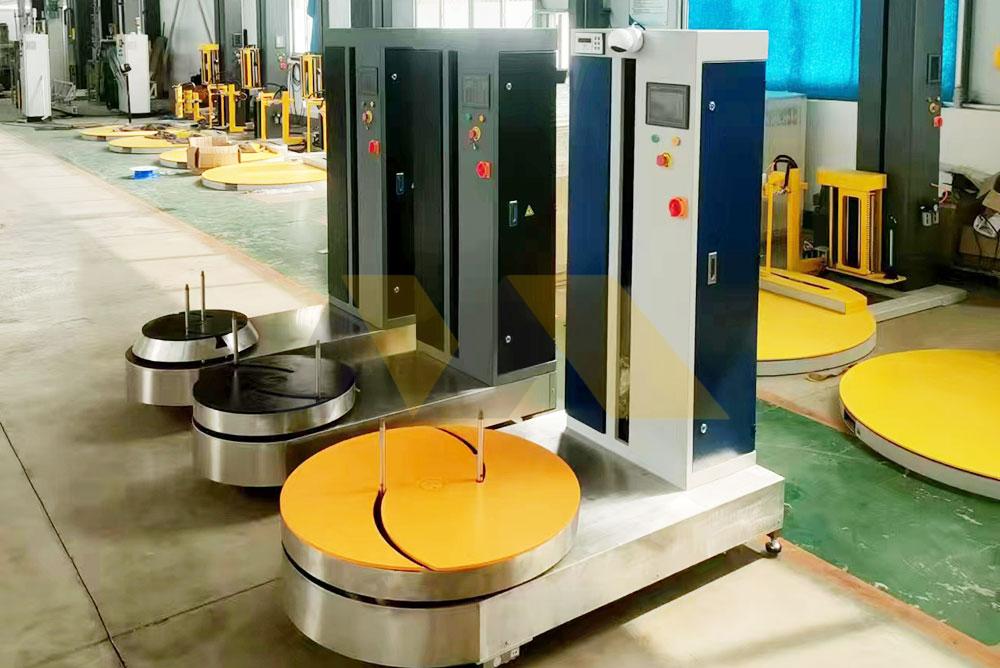
Understanding these benefits helps appreciate why this service exists. If ensuring your products arrive pristine is crucial, similar protective packaging might be relevant for your business too. Let’s discuss how robust packaging solutions can safeguard your shipments.
Dive Deeper: Unpacking the Benefits of Luggage Wrapping
From a traveler’s viewpoint, paying extra to wrap a suitcase needs justification. As someone involved in the machinery side, I see the consistent demand, which tells me many people find value. Let’s break down the specific advantages that drive this service.
1. Protection Against Physical Damage
This is often the most cited reason. Baggage handling systems aren’t always gentle. Luggage gets tossed, stacked, tumbled, and squeezed through conveyors and onto carts.
- Scratches and Scuffs: New or expensive luggage can quickly look worn after just one trip. The plastic layer takes the brunt of the cosmetic damage, keeping the suitcase surface pristine underneath. I remember investing in a nice hard-shell suitcase once, only to see it deeply scratched after its maiden voyage. Wrapping could have prevented that.
- Minor Impacts: While it won’t save a bag from a major crush, the multiple layers of tensioned film provide some cushioning against bumps and bangs.
- Surface Contamination: Dirt, grease, or spills from other bags on the carousel or tarmac won’t soil the luggage fabric or shell.
2. Deterrent Against Theft and Tampering (Pilferage)
This is a major selling point. While a determined thief can cut through the plastic, wrapping makes unauthorized access much harder and more obvious.
- Increased Difficulty: Rummaging through an unwrapped bag often involves just undoing zippers or clasps. Cutting through multiple layers of tight plastic wrap takes time and effort, and is more conspicuous. Opportunistic thieves look for easy targets.
- Tamper Evidence: If the wrap is cut or removed, it’s immediately obvious to the traveler upon collection. This allows them to inspect the contents immediately and report any issues before leaving the airport, which can be crucial for claims. An unwrapped bag tampered with might not show obvious signs.
- Securing Zippers/Clasps: The wrap physically holds zippers together, preventing them from being pried open easily to remove small items (a common type of pilferage). I’ve heard stories from logistics partners about how simple deterrence methods can be surprisingly effective.
3. Protection Against Weather and Spills
Luggage often sits exposed on tarmacs during loading and unloading, vulnerable to rain, snow, or puddles.
- Water Resistance: The plastic film creates a highly water-resistant barrier, keeping the contents dry even in wet conditions. This is especially valuable for soft-sided luggage which can otherwise soak through.
- Containing Leaks: Conversely, if something inside your luggage leaks (like toiletries), the wrap can help contain the spill, preventing it from damaging other bags.
4. Maintaining Luggage Integrity
Sometimes, luggage fails structurally, especially if overstuffed or aging.
- Preventing Accidental Opening: A broken latch or a burst zipper on an overpacked bag can lead to contents spilling out. The wrap acts like a tight belt, holding the entire suitcase together even if a closure fails. I once saw a suitcase arrive on the carousel with clothes spilling out – a situation wrapping likely would have prevented.
- Securing External Items: Keeps loose straps, external pockets, or attached items (like neck pillows) securely fastened to the main body of the luggage, reducing the risk of them snagging on conveyor belts or being torn off.
5. Enhanced Identification (Minor Benefit)
While most luggage is wrapped in clear film, sometimes colored or branded film is used. This can make the bag stand out slightly on the baggage carousel, aiding quicker identification. However, with the variety of colorful luggage available today, this is less of a primary benefit.
6. Peace of Mind
For many travelers, especially those checking valuable items or traveling through areas known for baggage issues, the psychological comfort of having taken an extra protective measure is worth the cost. It reduces anxiety about the handling process.
From a business perspective, like my clients who buy wrapping machines (some operate airport concessions, others are distributors like Lambert potentially reselling to service providers), understanding these passenger-facing benefits is key. They aren’t just selling a machine; they’re enabling a service that addresses genuine traveler concerns. The reliability of the machine we supply directly impacts the quality and consistency of these advantages. A poorly wrapped bag due to a malfunctioning machine negates the whole purpose. That’s why focusing on machine quality and dependable support is central to being a trustworthy supplier in this field.
How much does wrapping luggage cost?
Thinking about using the wrapping service, but worried about the price? The cost can vary, but understanding the typical range helps decide if it’s worth it for you. Let’s look at the numbers.
Wrapping a single piece of luggage at the airport generally costs between $10 and $25 USD, or the local equivalent. The exact price depends on factors like the airport’s location (major hubs often charge more), the size of the luggage (oversized items may cost extra), and the specific service provider operating the concession. Some providers might offer multi-bag discounts or premium options with thicker film or straps for a higher fee.
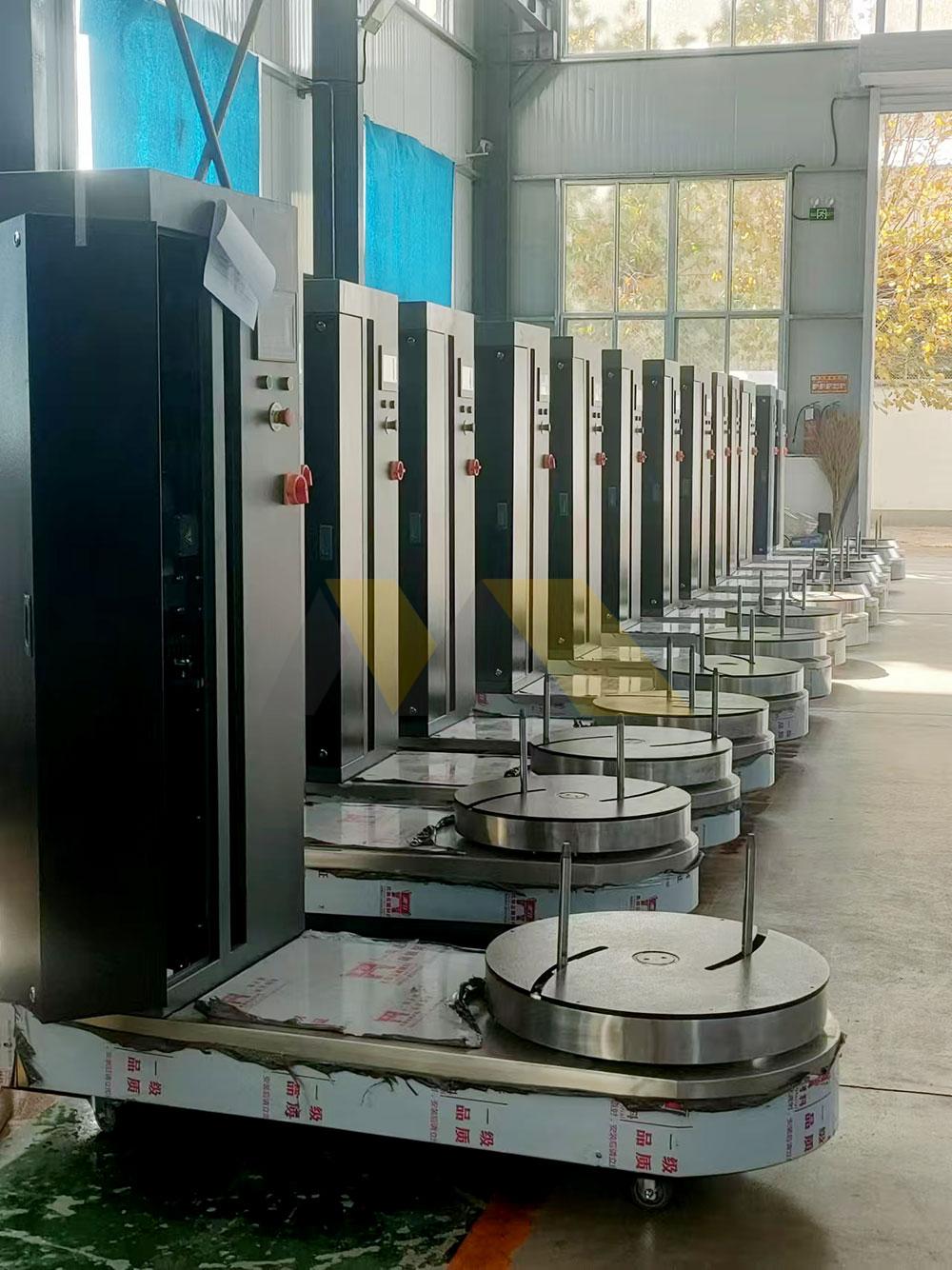
Knowing the price range helps evaluate the service. If you handle large volumes or need consistent wrapping, investing in your own machine might be more economical long-term. Let’s discuss if owning equipment fits your business needs.
Dive Deeper: Breaking Down the Cost of Wrapping Luggage
The price tag for wrapping a suitcase isn’t arbitrary. It reflects a combination of operational costs, location factors, and the value proposition to the traveler. As a manufacturer, I see the initial cost of the machine itself, but that’s just one piece of the puzzle for the service provider. Let’s explore what goes into that $10-$25 figure.
Factors Influencing the Per-Bag Price
- Airport Location and Fees: This is huge. Operating any business inside an airport terminal is expensive. Service providers pay hefty concession fees or rent to the airport authority. Costs are generally higher at major international hubs (like JFK, Heathrow, Changi) compared to smaller regional airports simply because the cost of doing business there is higher. I’ve seen quotes for concession fees that significantly impact the final service price. Prices in North America or Europe might typically be higher than in some parts of Asia or South America, reflecting local operating costs and market rates.
- Service Provider: It might be the airport itself, an airline, or a specialized third-party company (like Seal & Go, TrueStar). Each has its own pricing strategy and overhead structure. Competition between providers at the same airport (if any) can influence prices, but often there’s only one provider.
- Luggage Size and Complexity: Most prices are quoted for a standard suitcase. Oversized items like bicycles, golf clubs, or large boxes require significantly more film and time to wrap, often incurring a higher charge. Some providers might have tiered pricing based on dimensions or weight.
- Level of Service/Options: The standard wrap involves a certain number of film layers. Some providers might offer premium options like:
- Extra Layers: More film for increased durability.
- Reinforcing Straps: Plastic straps applied over the film for extra security.
- Bubble Wrap: Added cushioning for fragile items before stretch wrapping.
- Insurance/Tracking: Some services bundle basic insurance or tracking features. These add-ons increase the price.
- Labor Costs: Wages for the staff operating the machines vary significantly by country and region. This is a direct operational cost factored into the price.
- Material Costs (Stretch Film): The cost of the LLDPE stretch film itself. While providers buy film in bulk, it’s still a consumable cost for every bag wrapped. Film prices can fluctuate based on raw material costs (oil). As a machine supplier, we often advise clients on sourcing quality film cost-effectively.
- Machine Cost (Amortization & Maintenance): The initial purchase price of the wrapping machine is amortized over its expected lifespan. Regular maintenance and potential repairs also add to the operating costs. A reliable, durable machine might cost more upfront but save money long-term on repairs and downtime – something I always stress to buyers like Lambert. Our machines are built for durability to minimize this ongoing expense for our clients.
- Profit Margin: Naturally, the service provider includes a profit margin to make the business viable.
Is the Cost Worth It for the Traveler?
This is subjective and depends on individual circumstances:
- Value of Contents: Someone checking luggage full of expensive electronics or designer clothing might see the $15 wrap as cheap insurance.
- Luggage Quality: Travelers with older, less sturdy luggage might find wrapping more necessary than someone with a brand-new, high-quality hard-shell case.
- Destination/Route: Traveling through airports known for high rates of pilferage or damage might increase the perceived value of wrapping.
- Personal Risk Tolerance: Some travelers are simply more anxious about their belongings and find the peace of mind worth the price.
- Alternatives: How does the cost compare to buying durable luggage straps ($5-$15, reusable) or investing in higher quality luggage ($$$)?
From my perspective supplying the machines, understanding this cost structure is important when talking to clients. Whether they are an airport authority, a service company, or a distributor, the economics of the end-service influence their purchasing decisions. They need a machine that is not only reliable but also efficient (e.g., good film pre-stretch to save on material costs) to help manage these operational expenses and offer a competitively priced service.
Do you think that baggage wrapping equipment is a useful feature at the airport?
Is wrapping luggage at the airport truly necessary, or just an extra expense? Some travelers swear by it, others ignore it. Let’s weigh whether it’s a genuinely useful service.
Yes, I believe baggage wrapping equipment is a useful feature at airports. While not essential for everyone, it offers valuable protection against damage and theft for those who choose it. It addresses real traveler anxieties, provides an optional layer of security, and generates non-aeronautical revenue for airports or service providers. Its utility lies in providing choice and catering to specific passenger needs and preferences for peace of mind.
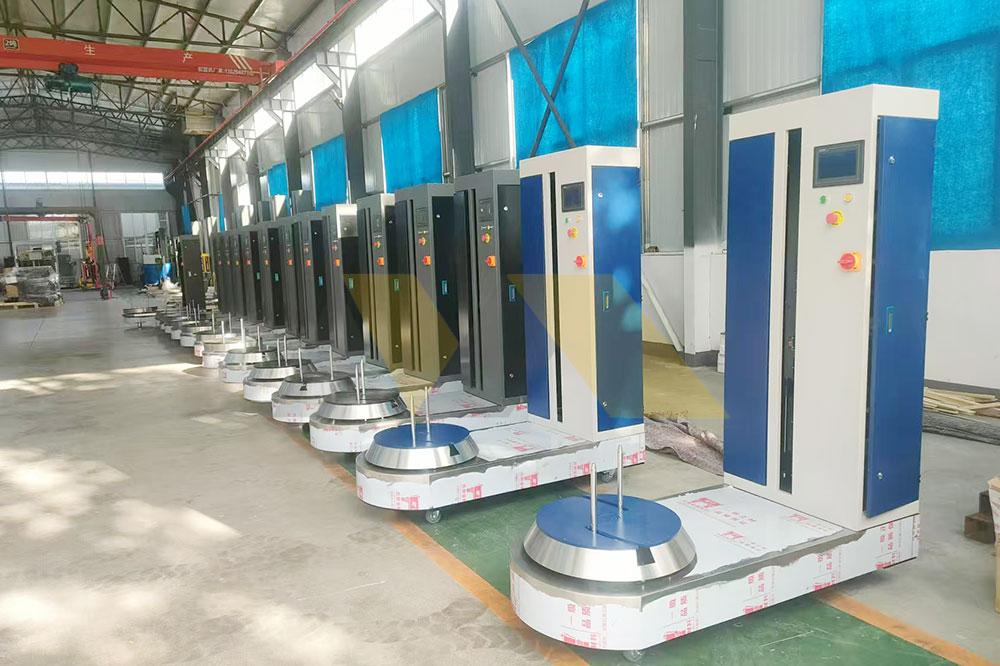
Its usefulness is clear for many passengers and operators. If you’re considering offering this service or need reliable equipment, understanding its value proposition is key. Let’s connect and discuss how dependable machinery can support this useful airport feature.
Dive Deeper: Assessing the Usefulness of Airport Luggage Wrapping
The presence of luggage wrapping stations in airports worldwide suggests there’s a demand. But is it genuinely useful in the grand scheme of air travel? As someone whose business involves these machines, I’ve thought about this quite a bit, balancing the pros and cons.
Arguments Supporting its Usefulness
- Addresses Real Passenger Concerns: As discussed earlier, damage and theft do happen. Baggage handling can be rough, and opportunistic pilferage exists. Wrapping provides a tangible solution, however imperfect, to mitigate these risks. For passengers who have experienced lost items or damaged bags before, the service feels very useful.
- Provides Choice and Optionality: It’s not mandatory. Travelers can assess their own luggage, contents, destination, and risk tolerance, and decide if the service is worth the cost for them. Having the option available caters to diverse passenger needs and preferences.
- Revenue Generation: For airports and service providers, wrapping is a source of non-aeronautical revenue. This income can help airports fund operations or improvements, potentially keeping other fees lower. It also creates jobs for the staff operating the machines. From my factory’s standpoint, this revenue stream is what drives demand for our machines from buyers like airport service companies.
- Handles Specific Needs: It’s particularly useful for:
- Non-standard Luggage: Wrapping can bundle awkward items or provide basic protection for things like backpacks with many straps that could get caught in machinery.
- Fragile Items: While not a guarantee, the extra layers can add some perceived protection.
- Securing Repairs: If a zipper breaks mid-trip, wrapping can be a temporary fix to get the bag home securely.
- Deterrence Factor: Even if not foolproof, the visual deterrent can steer casual thieves towards easier, unwrapped targets. It signals that the owner has taken extra precautions.
Arguments Against or Questioning its Usefulness
- Environmental Impact: This is a significant concern. Stretch wrap is typically single-use plastic (LLDPE). Wrapping millions of bags contributes to plastic waste. While LLDPE is recyclable, ensuring it actually gets recycled within the airport waste stream infrastructure globally is challenging. I’ve had conversations about biodegradable or recycled-content films, but their adoption seems slow, likely due to cost and performance questions. This is an area the industry needs to address more seriously.
- Cost vs. Benefit: For many travelers, especially those with durable luggage or non-valuable contents, the cost outweighs the perceived benefits. It can feel like an unnecessary upsell.
- Security Theatre? A determined thief can cut through wrap quickly. Airport security (like TSA in the US) may need to open bags for inspection, requiring the wrap to be cut off anyway (though some wrapping services offer a free re-wrap if this happens post-security check-in). Does it provide real security or just a feeling of security?
- Modern Luggage Durability: Luggage technology has improved. Many modern hard-shell cases are very tough and water-resistant, diminishing the need for external protection. Integrated TSA-approved locks also offer a level of security.
- Inconvenience: If the wrap needs cutting for inspection, it adds hassle for security personnel and potentially the traveler.
My Personal Perspective (as a Supplier)
Balancing these points, I lean towards yes, it is a useful feature, albeit a niche one. Here’s why:
- Market Demand is Real: The service persists and expands because people choose to use it. My order book reflects this. Whether driven by genuine need, anxiety, or habit, the demand exists. If passengers didn’t find it useful, the services would disappear.
- The Role of Reliable Equipment: For the service to be useful, the execution must be flawless. A machine breakdown causes delays, frustration, and poorly wrapped bags that offer little protection. A trustworthy supplier provides equipment that enables the service to deliver its promised benefits reliably. When I talk to clients like Lambert, who might be considering distributing these machines, the focus is always on reliability because that’s what makes the end-service valuable and justifies the investment.
- It Solves a Problem: It may not solve all problems or be necessary for all travelers, but it directly addresses specific, valid concerns for a segment of the traveling public. Providing options is generally a positive aspect of customer service.
Ultimately, the usefulness isn’t universal, but it’s significant enough for a specific market segment and for the operators offering the service. The key is ensuring it’s done well, with efficient, reliable machinery and, ideally, with growing attention to environmental sustainability.
Conclusion
Finding a trustworthy luggage wrapping machine supplier is vital for export success. It hinges on quality, clear communication, proven reliability, proper certification, and understanding your needs as an international buyer. These machines, common at airports, offer real advantages like protection and security, justifying their cost for many travelers and making them a useful, revenue-generating feature for airports.

